CAMBRIDGE, MA—Four Indian-Americans are included in the MIT Technology Review’s prestigious 35 Innovators Under 35 list for the year 2016. They are: Dinesh Bharadia, Jagdish Chaturvedi , Maithilee Kunda and Sonia Vallabh. Samay Kohli of India and Bangladeshi-American Ehsan Hoque were also included in the list. (Photos, bios and description by MIT Technology review)
“The people in our 16th annual celebration of young innovators are disrupters and dreamers. They’re inquisitive and persistent, inspired and inspiring,” said MIT Tech Review. “No matter whether they’re pursuing medical breakthroughs, refashioning energy technologies, making computers more useful, or engineering cooler electronic devices—and regardless of whether they are heading startups, working in big companies, or doing research in academic labs—they all are poised to be leaders in their fields.”
The magazine said that these innovators are building the stuff of the future, from a smart sweatband to tomorrow’s memory technology.
Here are the brief bios of four Indian-Americans as published by MIT Technology Review:
Dinesh Bharadia, 28
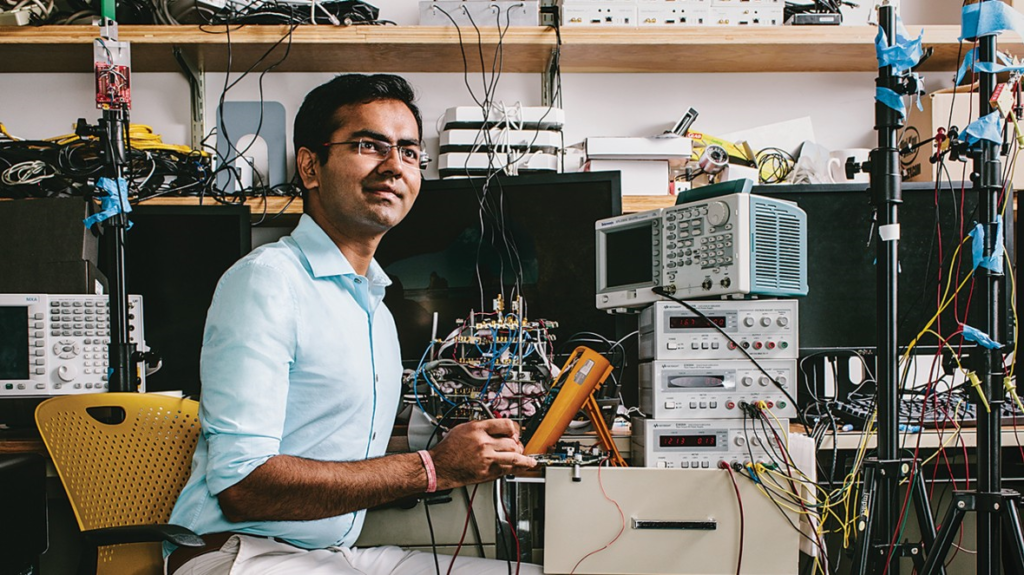
MIT Computer Science and Artificial Intelligence Laboratory
A seemingly impossible radio design will double wireless data capabilities.
Dinesh Bharadia invented a telecommunications technology that everyone said would never work: he found a way to simultaneously transmit and receive data on the same frequency.
Because the signal from broadcasting a radio transmission can be 100 billion times louder than the receiving one, it was always assumed that outgoing signals would invariably drown out incoming ones. That’s why radios typically send and receive on different frequencies or rapidly alternate between transmitting and receiving. “Even textbooks kind of assumed it was impossible,” Bharadia says.
Bharadia developed hardware and software that selectively cancel the far louder outgoing transmission so that a radio can decipher the incoming message. The creation of the first full-duplex radio, which eventually could be incorporated into cell phones, should effectively double available wireless bandwidth by simply using it twice. That would be a godsend for telecom companies and consumers alike.
Samay Kohli, 30

GreyOrange
After greasing the wheels of India’s e-commerce boom, this executive eyes overseas expansion.
Homegrown e-commerce companies in India are slashing prices and delivery times as they battle to serve the country’s burgeoning middle class. Many of these companies are able to do it because of warehouse automation technologies developed by Samay Kohli and his team at the robotics firm GreyOrange.
Two of GreyOrange’s Butler robots, which are designed to be warehouse workhorses.
GreyOrange sells swarms of “Butler” robots, which store products and bring shelves to human workers, and “Sorters,” which automatically scan and sort packages of any size or shape. The company boasts 92 percent of India’s warehouse automation market, a sector that Kohli thinks “can become humongous.”
With offices in Hong Kong and Singapore, the company isn’t content serving India alone. It plans to expand into the Middle East and China this year, and within two years Kohli expects to be exporting warehouse robots to Europe. He hopes to get a first-mover advantage over other robotics startups chasing the same opportunity—one that became even larger after Amazon bought the warehouse automation company Kiva Systems in 2012 and brought its technology in house rather than selling it to Amazon’s e-commerce rivals.
Kohli and his cofounder Akash Gupta launched the company in 2011, after developing, while in college, what they believe to be India’s first humanoid robot. Seeing China’s e-commerce boom, they spotted “an industry ripe for disruption,” says Kohli.
Maithilee Kunda, 32
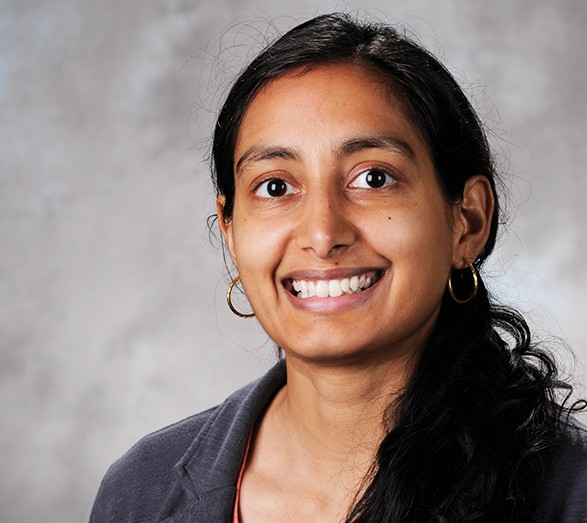
Vanderbilt University
People on the autism spectrum are inspiring her novel approach to creating artificial intelligence.
“My research began in graduate school when I was working on artificial-intelligence systems and read Thinking in Pictures by Temple Grandin, a professor of animal science who talks about how her autism gives her this unique visual way of thinking compared to most people.
“I thought: That’s interesting. Most AI systems are not ‘visual thinkers’ like her. Most AI systems use variables, numbers, lists, and so on, and they reason using mathematical and logical operations. These systems are ‘verbal thinkers.’ What if you had an AI system that used data made up entirely of images and reasoned only using visual operations, like rotating images around or combining images together? If Temple Grandin can do amazing things because of her visual thinking abilities, it seemed to me that the same should be true of AI systems.
“I’ve been taking what we learn from people on the autism spectrum who have interesting visual abilities and building that into AI systems. It’s early, but I expect that they ultimately will be very valuable. If we want to help students learn to solve difficult problems, then we ought to have several AI tutors that can show students different ways of solving the same problem. If we want to help doctors find patterns of disease outbreaks, then we ought to have multiple AI analysts that can sift through the data using different styles of pattern finding.”
Jagdish Chaturvedi, 32
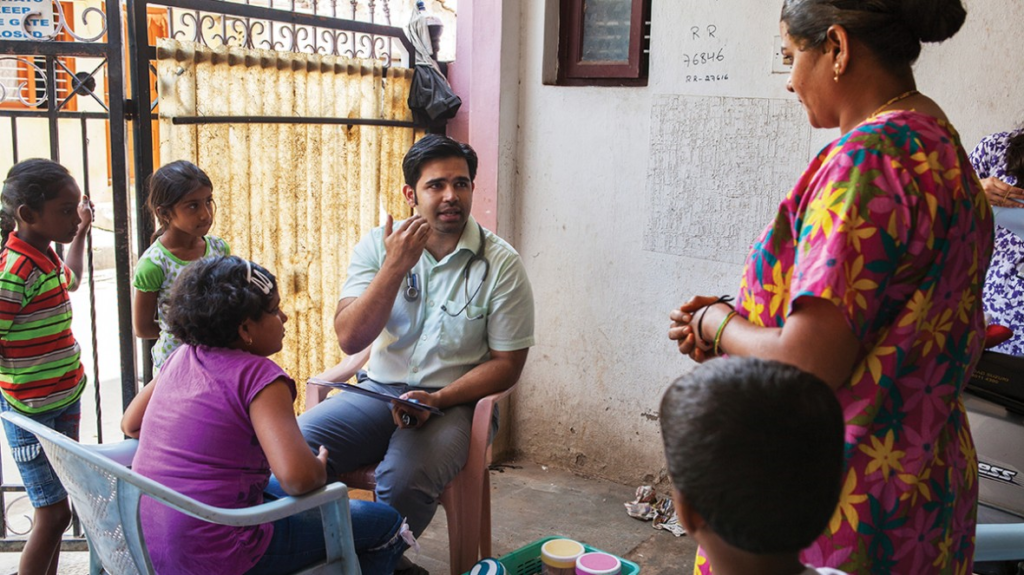
InnAccel
This doctor can laugh about the complex path he took to becoming an innovator.
“I invented a low-cost ear, nose, and throat—ENT—imaging device. So I call myself the first ENTrepreneur! Sorry—cheesy joke; I’m also an amateur standup comedian. I love performing. It’s how I de-stress. But I also find comedy helps sharpen my observational skills.
“Those skills helped me invent Entraview, which has helped 200,000 patients. As a trainee doctor I saw many farmers with advanced throat cancer. I discovered that expensive imaging systems were only available in major cities, so rural doctors relied on outdated mirrors and headlamps. I asked my boss why no one had tried attaching endoscopes to small off-the-shelf cameras. He said, ‘Why don’t you?’
“Entraview was a big learning curve for me. I worked with a design firm but got too involved trying to create a one-size-fits-all device. I’d nearly exhausted my funds when my boss said, ‘Go learn the right way to do this.’
“The Stanford-India Biodesign program teaches Indian doctors and engineers how to invent. Their process showed me where I’d gone wrong and gave me the connections to arrange a pitch with Medtronic. We simplified and focused on ears. Not the original goal, but the path of least resistance to market, and now the platform can evolve.
“I’ve since contributed to 18 medical-device inventions, and I’m now clinical lead at a med-tech incubator, InnAccel, where I help multiple startups while still practicing medicine, to keep me grounded with clinical needs.
“India imports 75 percent of its medical tech. We have great inventors, but most make the same mistakes because they don’t get the innovation process. The first step is finding the right team.”
Sonia Vallabh, 32
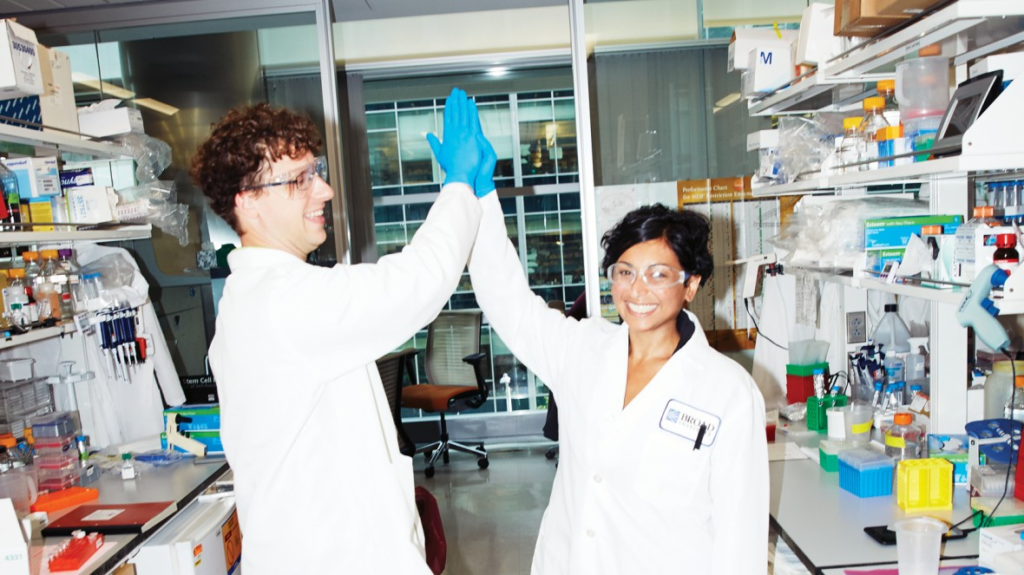
Broad Institute
A devastating personal diagnosis led her to become a scientist on the trail of a cure.
Five years ago, Sonia Vallabh graduated from Harvard Law School and went to work at a small consulting company. But a stunning medical diagnosis made her change course completely: she learned she has a genetic mutation that causes a deadly brain disease. Today she and her husband work in a lab at the Broad Institute of MIT and Harvard and have published research showing a possible pathway to a treatment. As she told the tale at an event on precision medicine with President Obama in February:
“At the heart of my story is a single typo in my genome.
“We all carry around thousands of typos in our DNA, most of which don’t matter much to our health—but my typo is an unusually clear-cut case. It’s a single change in a particular gene that causes fatal genetic prion disease, where patients can live 50 healthy years but then suddenly fall into deep dementia and die within a year. And there’s no treatment—at least, not yet.
“In 2010, I watched this disease unfold firsthand. I had just married my husband, Eric Minikel. My mom, healthy at 51, had single-handedly organized our beautiful wedding. Then, all of a sudden, we were watching her waste away before our eyes. We had no name for what we were seeing. It was only from her autopsy that we learned there was a 50 percent chance I’d inherited the genetic mutation that killed her.
“We decided right away I’d get tested. We wanted to know what we were up against. After months in agonizing limbo, a geneticist confirmed our greatest fear: The same change that was found in your mother was found in you.
“Knowing the hard truth has given us a head start against our formidable medical enemy.”
“Knowing the hard truth has given us a head start against our formidable medical enemy. We waged a campaign to educate ourselves—taking night classes, attending conferences, and eventually taking new jobs in research labs. We retrained as scientists by day and applied what we were learning to understanding my disease by night. Four years later, we’re devoting our lives to developing therapeutics for my disease.
“We know the road ahead is uncertain—no amount of hard work can guarantee there will be a treatment for me when I need one. We are going to do everything we can, hand in hand with creative allies from every sector, to build this bridge as we walk across it and develop a treatment that could save my life, and the lives of many others.”
Ehsan Hoque, 34
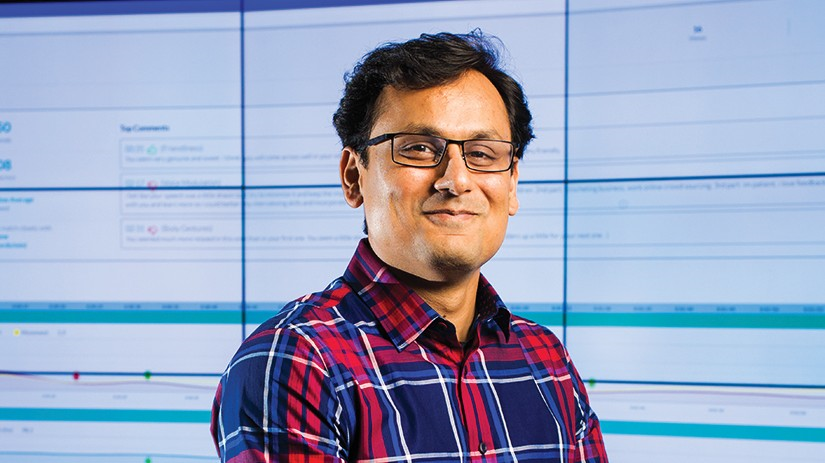
University of Rochester
If you want to be the life of the party, practice by talking to a machine first.
Can computers teach us to be our best selves? Ehsan Hoque, a researcher at the University of Rochester, believes so. He has created two computer systems that train people to excel in social settings.
One program has a virtual businesswoman that can recognize your expressions and statements so she can nod, smile, and prompt you with further questions as you chat with her. At the end of the conversation she’ll give you feedback about your interpersonal performance, including your body language, intonation, and eye contact.
Hoque also designed a pared-down mobile version, free for anyone with Internet access to use. There’s no animated character; instead, it records video and sends you a write-up about your social skills, noting the speed of your speech, the pitch and loudness of your voice, the intensity of your smiles, and whether you overused certain words.
All of Hoque’s research comes back to his brother, a teenager with Down syndrome. Hoque is his brother’s primary caretaker and has seen how difficult social interactions of any kind can be for him, especially in school. But Hoque hopes his tools will be useful to all kinds of people—individuals with Asperger’s, customer service representatives, nervous students with looming class presentations, or even just someone gearing up for a date or an interview.







